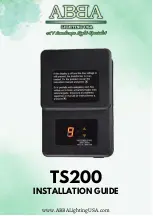
3.3
Before You Begin
3.3.1 Site Preparation
Each E3 MODULEVEL transmitter is built to match the
physical specifications of the required installation. Ensure
that the process connection(s) on the vessel matches the
MODULEVEL process connection(s).
See
Mounting, Section 3.4
.
Ensure that the wiring between the power supply and
MODULEVEL transmitter are complete and correct for the
type of installation.
When installing the MODULEVEL transmitter in a general
purpose or hazardous area, local, state and federal regulations
and guidelines must be observed.
See
Wiring, Section 3.5.3
.
3.3.2 Equipment and tools
No special equipment or tools are required to install the
Electronic MODULEVEL. The following items are
recommended:
• Wrenches, flange gaskets and flange bolting appropriate for
process connection(s)
• Flat-blade screwdriver
• Level
•
1
⁄
8
" Allen wrench
• Fieldbus compatible power supply with proper termination
3.3.3 operational Considerations
The MODULEVEL transmitter should be located for easy
access for service, configuration, and monitoring. There
should be sufficient headroom to allow installation and
removal of the transmitter head and, in cases of tank top
configuration, the displacer. Special precautions should be
made to prevent exposure to corrosive atmosphere, excessive
vibration, shock, or physical damage.
The operating temperature range for the transmitter elec-
tronics is -40 to +176 °F (-40 to +80 °C). The operating
temperature range for the digital display is -5 to +160 °F
(-20 to +70 °C).
Caution:
Operation of all buoyancy type level devices should be
done in such a way as to minimize the action of dynamic
forces on the float or displacer sensing element. Good
practice for reducing the likelihood of damage to the con-
trol is to equalize pressure across the device very slowly.
11
48-640 E3 Modulevel
®
Displacer Level Transmitter - F
OUNDATION
fieldbus
™











































